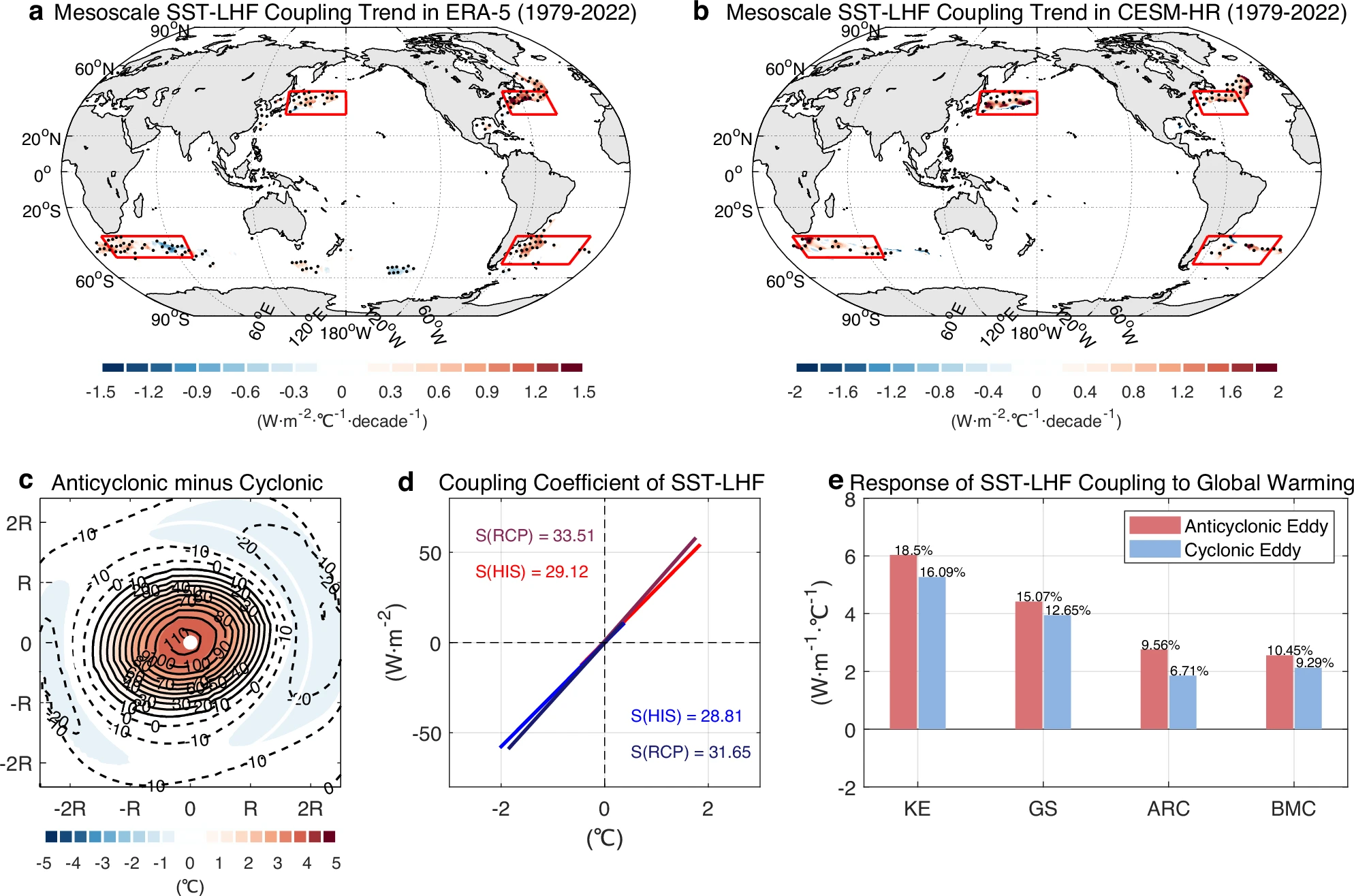Xiaohui Ma, Xingzhi Zhang, Lixin Wu, Zhili Tang, Peiran Yang, Fengfei Song, Zhao Jing, Hui Chen, Yushan Qu, Man Yuan, Zhaohui Chen & Bolan Gan
Published in Nature Communications, September 2024
The influence of greenhouse warming on mesoscale air-sea interactions, crucial for modulating ocean circulation and climate variability, remains largely unexplored due to the limited resolution of current climate models. Additionally, there is a lack of theoretical frameworks for assessing changes in mesoscale coupling due to warming. Here, we address these gaps by analyzing eddy-resolving high-resolution climate simulations and observations, focusing on the mesoscale thermal interaction dominated by mesoscale sea surface temperature (SST) and latent heat flux (LHF) coupling in winter. Our findings reveal a consistent increase in mesoscale SST-LHF coupling in the major western boundary current regions under warming, characterized by a heightened nonlinearity between warm and cold eddies and a more pronounced enhancement in the northern hemisphere. To understand the dynamics, we develop a theoretical framework that links mesoscale thermal coupling changes to large-scale factors, which indicates that the projected changes are collectively determined by historical background wind, SST, and the rate of SST warming. Among these factors, the large-scale SST and its warming rate are the primary drivers of hemispheric asymmetry in mesoscale coupling intensification. This study introduces a simplified approach for assessing the projected mesoscale thermal coupling changes in a warming world.

Fig. Global distribution of the decadal trends of mesoscale SST-LHF coupling strength as derived from the fifth generation European Centre for Medium-Range Weather Forecasts atmospheric reanalysis (ERA5) (a) and high-resolution Community Earth System Model (CESM-HR) (b) during 1979–2022. The coupling strength is computed using the linear regression coefficient between high-pass filtered monthly SST and LHF (Methods) with trends significant at a 99% confidence level indicated by black dots. c Composites of SST (color shading, °C) and LHF (contours, W/m2) anomalies associated with mesoscale oceanic eddies during historical periods (1956-2005) in CESM-HR. Shown are winter season mean anomalies in anticyclonic warm minus cyclonic cold eddy composites within four western boundary current (WBC) regions (outlined by red boxes in a, b). The white circle represents one eddy radius and the white dot marks the eddy center. d Mesoscale SST-LHF coupling strength (W/m2/°C) during historical (HIS, 1956–2005) and future (RCP, 2063-2100) periods in CESM-HR for warm (red) and cold (blue) eddies averaged across four WBC regions. The coupling strength is computed using the linear regression coefficient between SST and LHF anomalies within twice the radius of eddy composites. e Differences in mesoscale SST-LHF coupling strength between future and historical periods in CESM-HR for warm (red bars) and cold (blue bars) eddies in the Kuroshio Extension (KE), the Gulf Stream (GS), the Agulhas Return Current (ARC) and the Brazil-Malvinas Confluence Region (BMC) regions, with fractional differences labeled atop the respective bars. Source data are provided as a Source Data file.
Ma, X., Zhang, X., Wu, L. et al. Midlatitude mesoscale thermal Air-sea interaction enhanced by greenhouse warming. Nat Commun 15, 7699 (2024). https://doi.org/10.1038/s41467-024-52077-z